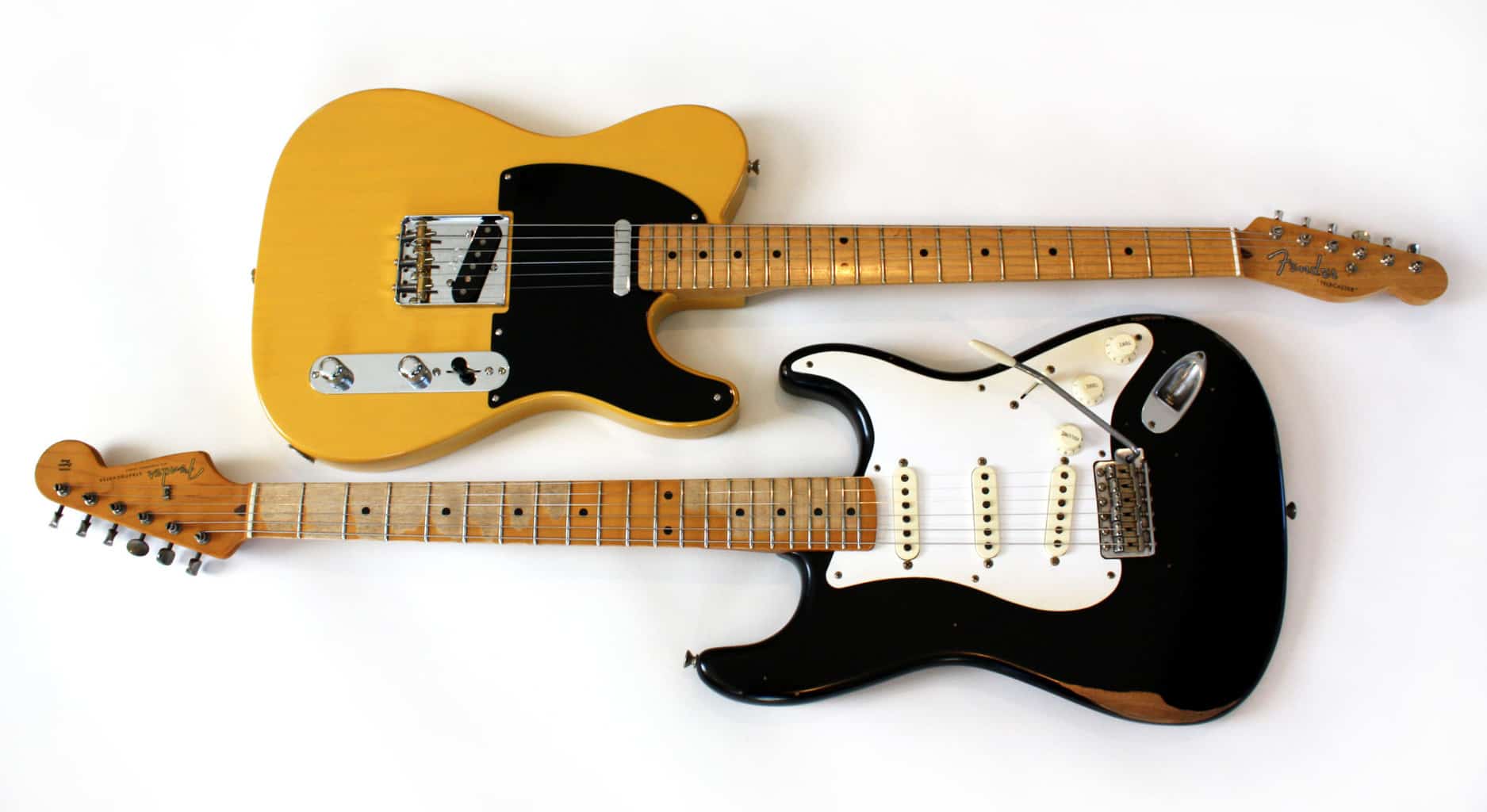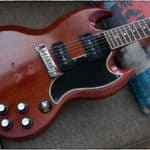Vintage guitars are one of the most desired things among guitar players of my generation.
That and a definitive cure for baldness.
But we will leave mane issues on the side for this article and focus on the guitars that made history and carved their tone into our collective imagination.
Determining whether an instrument is vintage or not is a rather easy task when you are comparing between a 2015 Squier Bullet and a ‘62 Stratocaster, however, things get more convoluted as you approach the late 70s or 80s.
Where is the cutoff for considering a guitar modern, vintage, or even an antique?
Well, here is a short answer to that question:
In general terms, any instrument older than 30 years is considered vintage. However, the consensus among players is that the vintage status should be granted only to guitars built before 1980. The “antique” tag is reserved for instruments older than 100 years, which for now only applies to acoustic guitars.
In this article I will go deep into the topic of when is valid to claim an instrument is vintage, and when you should be more careful about it.
After reading this piece of content you will have a clearer idea about what makes for a vintage guitar.
Are you ready to get started?
Let’s go!
When is a guitar considered vintage?
Many players claim that an instrument is considered vintage after its 30th birthday.
This definition puts all of the 80s and early 90s into the vintage territory, and I’m not convinced by that.
We can do better.
Reverb.com, for instance, chose a more strict approach to the matter, defining the cutoff at 1980. Everything older is considered vintage, anything newer is labeled as modern.
Is that fair?
Probably.
The thing is, in my opinion, that the vintage status doesn’t mean that much per se.
It is not a synonym of quality or an incredible tone, especially if we take into consideration any of these broad (but clear and necessary) definitions.
The player’s craze for old instruments is mostly fueled by legendary specimens, mostly from the ‘50s and ‘60s.
Decades where the instrument manufacturing was done at a smaller scale, which allowed for workshops to source higher quality materials and take special care to quality control every item.
As the demand grew, these workshops started evolving into factories, and, broadly speaking, from the 70s on, the quality of these “vintage” instruments started not being the same as the one that drove all this demand.
But this is not a harsh critique of the vintage fever.
What I’m trying to say is that this aforementioned status probably acts to detriment of many ill-informed enthusiasts who might end up with a lower quality guitar at a price higher than they would pay for a modern pretty acceptable one.
Vintage vs antique guitars
The “antique” status for objects, in general, is achieved after 100 years, so this puts mostly acoustic guitars in this category. The first record of an electric guitar, which was an acoustic with a magnetic pickup attached to it, was made in 1936, which leaves us with no antique electrics for a few years.
I would, however, colloquially consider an antique guitar everyone built before the 50s where the Fender and Gibson supremacy began.
But that is just my opinion and my way of simplifying things.
Does the vintage status differ between brands?
The vintage status is mostly a matter of antiqueness than anything else. Anything made before the 80s has the right to be called vintage, in my opinion. Brands have, however, had different, but in some cases overlapping golden eras, mostly between the 50s and early 70s.
I think that those instruments that for many of us evoke the legendary tones of the records that we grew up loving are the ones that fuel the idea many of us have about vintage guitars.
How can you tell if your guitar is vintage?
To tell if your guitar is a vintage specimen you would likely want to find out its serial number.
In many cases, you will spot it on the back of the headstock, but in some others, such as in Fender guitars, it might be hidden in the heel of the neck.
So in that case you will have to detach the neck and body of the guitar. It’s not really a hard task to take upon, but if you are not very confident in your technician skills, I recommend you find an expert.
Hey, even a professional might help you date your instrument.
For those who prefer a DIY approach, here I leave some links to where you can check up serial numbers for different brands.
- Here you can look up Fender serial numbers
- Here you can look up Gibson serial numbers
- Here you can look up Rickenbacker serial numbers
- Here you can look up Gretsch serial numbers
- Here you can look up Martin serial numbers
When the lookup fails, or more detail is needed, you should resort to checking for specific features typical for a distinct period.
That’s how many guitar historians really date older and fake instruments.
What about newer models marketed as vintage?
Newer guitars branded as vintage are clearly trying to get some of the demand for the real deal instruments that over the years have increased in price greatly.
It’s not a scam, but the effort brands make to keep customers happy and giving them some of what they are showing to prefer.
The deal with these instruments is that, although they are labeled as vintage, and they, in many cases, try to follow original specs, some of the materials used in the early years are no longer available.
This unavailability could be due to prohibitions, such as with some species of tonewoods, or even ivory.
Another “problem” with these modern vintage instruments is that they lack the “soul” of a road-worn relic.
And for many people, that soul is not just mysticism, but an actual qualitative difference in tone.
If you are interested in knowing why do vintage guitars sound better, or at least why many people claim that you should check my other article on that topic.

Hello there, my name is Ramiro and I’ve been playing guitar for almost 20 years. I’m obsessed with everything gear-related and I thought it might be worth sharing it. From guitars, pedals, amps, and synths to studio gear and production tips, I hope you find what I post here useful, and I’ll try my best to keep it entertaining also.





